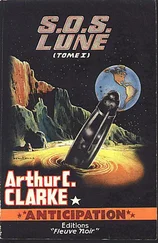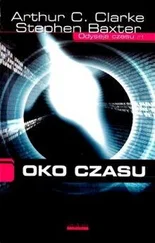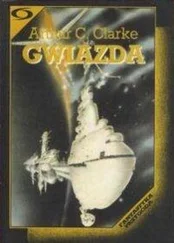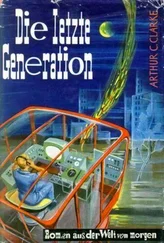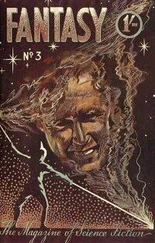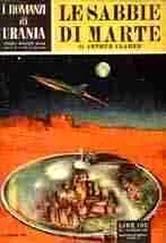She described how the corona, the sun’s extended outer atmosphere, is held together by powerful magnetic fields rooted in the sun itself. Sometimes these fields get tangled up, often over active regions. Such tangles will trap bubbles of superheated plasma, emitted by the sun, and then violently release them. That was what had happened this morning, over the big sunspot continent the experts were calling Active Region 12688: a mass of billions of tonnes of plasma, knotted up by its own magnetic field, had been hurled from the sun at a respectable fraction of the speed of light.
“The ejection took less than an hour to get here,” Siobhan said. “I understand that’s fast, for such phenomena. Nobody saw it coming, and nobody was particularly expecting it to happen at this stage of the sun’s cycle anyhow.” Except, she made a mental note, that lone astronomer on the Moon.
Phillippa prompted, “So this mass of gas headed for the Earth—”
“The gas itself is sparser than an industrial vacuum,” Siobhan said. “It’s the energy contained in its particles and fields that has done the damage.”
When it hit, the mass ejection had battered at the Earth’s magnetic field. The field normally shields the planet, and even low-orbiting satellites, but today the mass ejection had pushed the field down beneath the orbits of many satellites. Exposed to waves of energetic solar particles, the satellites’ systems absorbed doses of static electricity that discharged wherever they could.
“Imagine miniature lightning bolts sparking around your circuit boards—”
“Not good,” Phillippa said.
“No. Charged particles also leaked into the upper atmosphere, dumping their energy on the way—that was the cause of the aurorae. And Earth’s magnetic field suffered huge variations. Perhaps you know that electricity and magnetism are linked. A changing magnetic field induces currents in conductors.”
Phillippa said hesitantly, “Is that how a dynamo works?”
“Yes! Exactly. When it fluctuates, Earth’s field causes immense currents to flow in the body of the Earth itself—and in any conducting materials it can find.”
“Such as our power distribution networks,” Phillippa said.
“Or our comms links. Hundreds of thousands of kilometers of conducting cables, all suddenly awash with fast-varying, high-voltage currents.”
“All right. So what do we do about it?”
“Do? Why, there’s nothing we can do.” The question seemed absurd to Siobhan; she had to suppress an unkind impulse to laugh. “This is the sun we’re talking about.” A star whose energy output in one second was more than humankind could muster in a million years. This mass ejection had caused a geomagnetic storm that went far off the scales established by the patient solar weather watchers, but to the sun it was nothing but a minor spasm. Do, indeed: you didn’t do anything about the sun, except keep out of its way. “We just have to sit it out.”
Phillippa frowned. “How long will it last?”
“Nobody knows. This is unprecedented, as far as I can make out. But the mass ejection is fast moving and will pass over us soon. Only hours more, perhaps?”
Phillippa said earnestly, “We need to know. It’s not just power we have to think about. There’s sewage, the water supply …”
“The Thames barrier,” Toby said. “When is high tide?”
“I don’t know,” Phillippa said, making a note. “Professor McGorran, can you try to nail down a timescale?”
“Yes, I’ll try.” She closed down the link.
“Of course,” Toby said to Siobhan, “the sensible thing to do would be to build our systems more robustly in the first place.”
“Ah, but when have we humans ever been sensible?”
***
Siobhan continued to work. But as time wore on the comms links only worsened.
And she was distracted by more images.
Here was an immense explosion in the great trans-European pipeline that nowadays brought Britain most of its natural gas. Like cables, pipelines were also conductors thousands of kilometers long, and the currents induced in them could increase corrosion to the point of failure. Pipelines were grounded at frequent intervals to avert this problem. But this pipeline, a very modern structure, had been made of ethylene for economy’s sake, and was a good deal easier to ignite. Numbly Siobhan studied the statistics of this one incident: a wall of flame a kilometer wide, trees felled for hundreds of meters around, hundreds feared dead … She tried to imagine such horror multiplied a thousandfold around the world.
And it wasn’t just humans and their technological systems that were affected. Here was a random bit of news of flocks of birds apparently losing their way, and a haunting image of whales beached on a North American shore.
Toby Pitt brought her a phone, a clunky set trailing a cord. “I’m sorry it took so long,” he said.
The phone must have been at least thirty years old, but, connected to the Society’s reliable fiber-optic backup lines, it worked, more or less. It took her a few tries to get through to Guy’s, and then to persuade a receptionist to find her mother.
Maria sounded scared, but in control. “I’m fine,” she insisted. “The power outages have just been blinks; the emergency system is working well. But things are very strange here.”
Siobhan nodded. “The hospitals must be overwhelmed. Heat victims—the accidents in traffic—”
“Not just that,” Maria said. “People are coming in because their pacemakers are playing up, or their servo-muscles, or bowel control implants. And there’s a whole flood of heart attack victims, it seems to me. Even people with no implants at all.”
Of course, Siobhan mused. The human body itself is a complex system controlled by bioelectricity, itself subject to electrical and magnetic fields. We are all tied to the sun, she thought, like the birds and the whales, tied by invisible lines of force nobody even suspected existed a couple of centuries ago. And we are so very vulnerable to the sun’s tantrums, even our very bodies.
Toby Pitt said, “Siobhan, I’m sorry to interrupt. You’ve another call.”
“Who is it?”
“The Prime Minister.”
“Good Lord.” She thought it over, and asked, “Which one—?”
The phone came alive in her hand. As electricity jolted into her body the muscles of her right arm turned rigid. Then the phone shot from her grasp and slid over the table, showering blue sparks.
***************************
Somebody was hammering on the door of the flat.
Bisesa had learned to mask her reactions in front of Myra. Fixing a smile on her face, ignoring the racing of her heart, she got up from the sofa slowly and folded away her magazine.
Myra turned her head suspiciously. She was lying on her belly watching a softwall synth-soap. There was a lot of knowingness in those eight-year-old eyes, Bisesa thought, too much. Myra knew that something strange had happened to the world a few days ago, and it was odd that her mother was here in the first place. But there was a sort of understanding between the two of them, a conspiracy. They would act normal, and maybe at some point things would turn out to be normal after all: that was their unspoken hope.
Bisesa could use a whispered command to Aristotle to turn a section of the door transparent. But as a British Army officer trained in combat technology, she had never quite trusted electronic senses, and she peered through the old-fashioned spy hole to double-check.
It was only Linda. Bisesa opened the door.
Linda was a short, stocky, competent-looking girl. Aged twenty-two, she was Bisesa’s cousin, a student at Imperial College studying biospheric ethics. For the last two years she had served as Myra’s nanny during Bisesa’s long postings abroad. Right now she held two bulging paper bags of groceries, with two more stacked by her feet, and she was sweating profusely. “Sorry for kicking the door down,” she said. “I thought these damn bags would give way.”
Читать дальше

